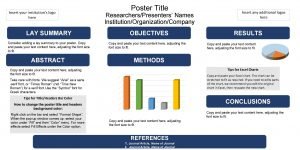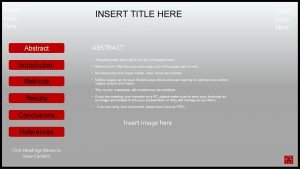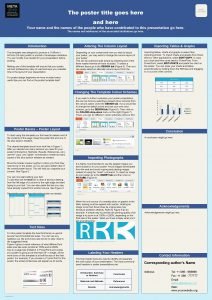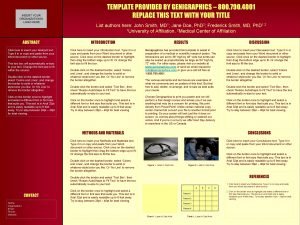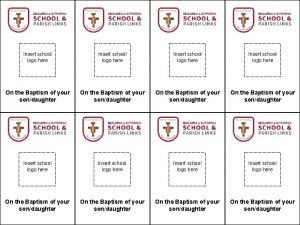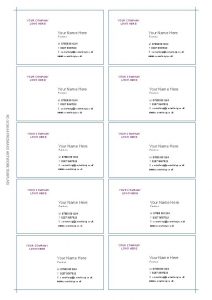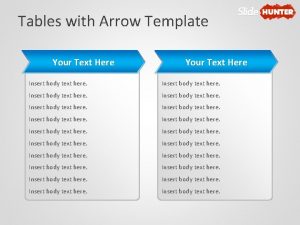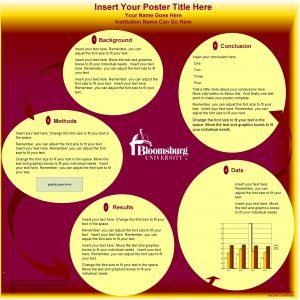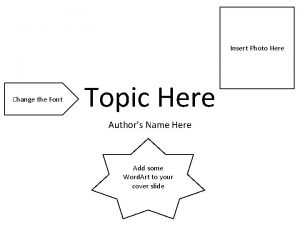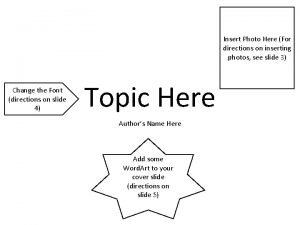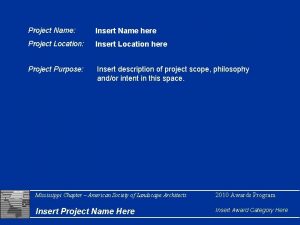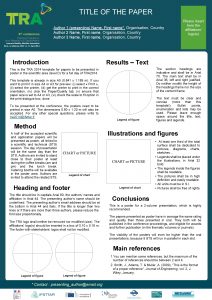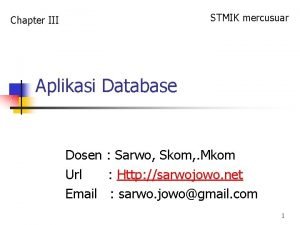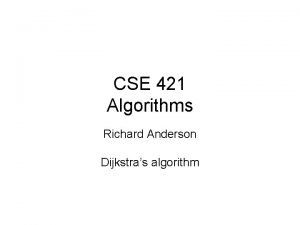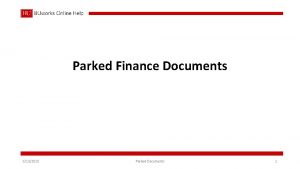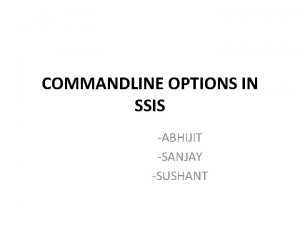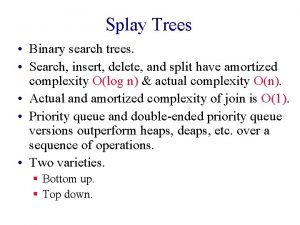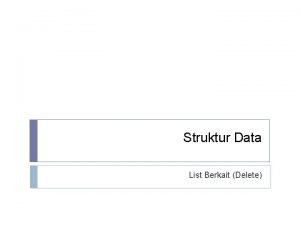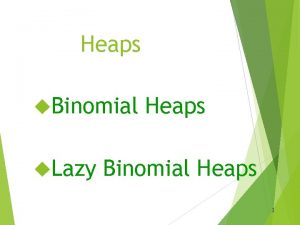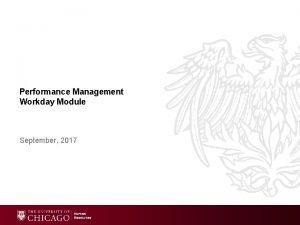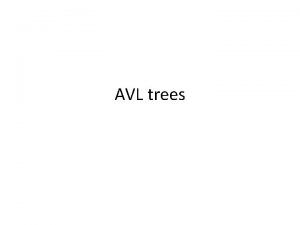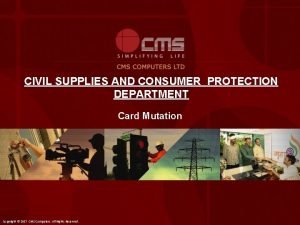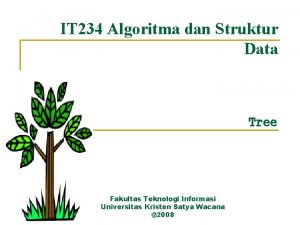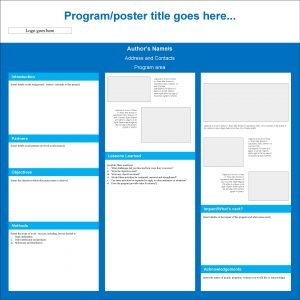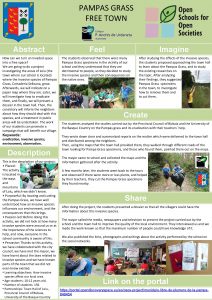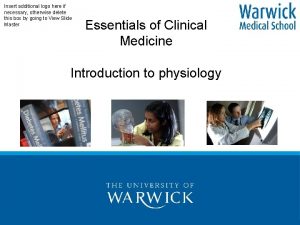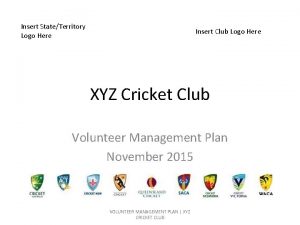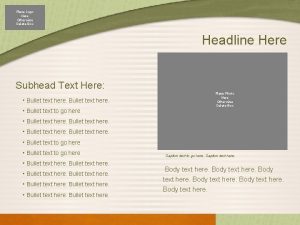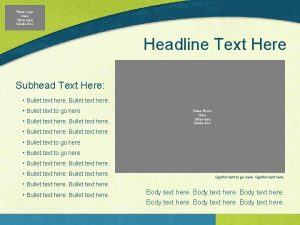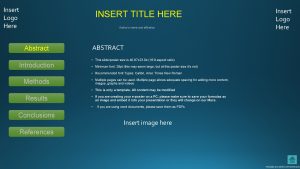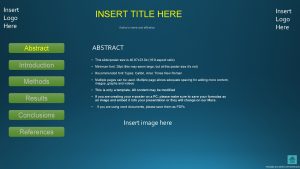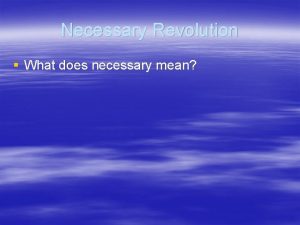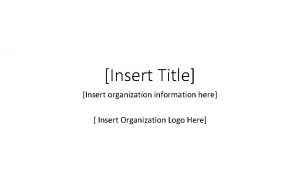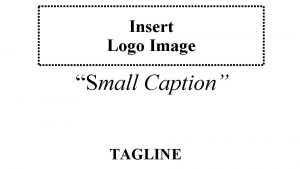Insert additional logo here if necessary otherwise delete









![Transport network Blood pumped by heart into • Arteries [arterial tree] into • Capillary Transport network Blood pumped by heart into • Arteries [arterial tree] into • Capillary](https://slidetodoc.com/presentation_image/5b45e7c79b219b051926aefca63e82c0/image-10.jpg)
![Arterial tree • Branching system of tubes of reducing diameters called arteries [larger] and Arterial tree • Branching system of tubes of reducing diameters called arteries [larger] and](https://slidetodoc.com/presentation_image/5b45e7c79b219b051926aefca63e82c0/image-11.jpg)






![So Second [pulmonary] set of capillaries must be inserted into the main circuit Because So Second [pulmonary] set of capillaries must be inserted into the main circuit Because](https://slidetodoc.com/presentation_image/5b45e7c79b219b051926aefca63e82c0/image-18.jpg)








![Respiratory system Exchange takes place at thin membrane [alveolar-capillary membrane] Blood comes from pulmonary Respiratory system Exchange takes place at thin membrane [alveolar-capillary membrane] Blood comes from pulmonary](https://slidetodoc.com/presentation_image/5b45e7c79b219b051926aefca63e82c0/image-27.jpg)



![Lungs • outer lining – the [visceral] pleura • air-conducting system – the bronchial Lungs • outer lining – the [visceral] pleura • air-conducting system – the bronchial](https://slidetodoc.com/presentation_image/5b45e7c79b219b051926aefca63e82c0/image-31.jpg)








![Respiratory muscles • • Diaphragm External intercostals Internal intercostals Accessory muscles [sterno-cleidomastoid, trapezius, scalenes] Respiratory muscles • • Diaphragm External intercostals Internal intercostals Accessory muscles [sterno-cleidomastoid, trapezius, scalenes]](https://slidetodoc.com/presentation_image/5b45e7c79b219b051926aefca63e82c0/image-40.jpg)















- Slides: 55

Insert additional logo here if necessary, otherwise delete this box by going to View Slide Master Introduction to cardio-vascular & respiratory anatomy


Plan of the afternoon • • Lecture 1. Explain basic physiology and anatomy of cardiovascular system Lecture 2. Explain basic physiology and anatomy of respiratory system Introduce surface anatomy • Group work. Examine anatomical models and answer some simple questions

Definitions: • Cardiovascular system: Transports oxygen and nutrition to the cells • Respiratory system: Provides oxygen to the blood stream


Sugar + oxygen = energy + carbon dioxide + water or C 6 H 12 O 6 + O 2 = e + CO 2 + H 20

Vascular System • Transport medium- blood- is circulated to the tissues by a • Pump – the heart - through a • Transport network - the vascular system [arteries, capillaries & veins] • Regulation mechanisms

Transport medium • • • Blood - fluid and cells Fluid - water and dissolved chemicals Cells – Red, which carry oxygen White of several types with a variety of functions, Platelets to aid clotting

Pump • Pump is the heart, which is a muscular organ. • Contraction of the muscular wall forces blood into the arterial system. • Valves ensure unidirectional flow.
![Transport network Blood pumped by heart into Arteries arterial tree into Capillary Transport network Blood pumped by heart into • Arteries [arterial tree] into • Capillary](https://slidetodoc.com/presentation_image/5b45e7c79b219b051926aefca63e82c0/image-10.jpg)
Transport network Blood pumped by heart into • Arteries [arterial tree] into • Capillary network where diffusion to cells takes place and drains back into • Veins and back to heart
![Arterial tree Branching system of tubes of reducing diameters called arteries larger and Arterial tree • Branching system of tubes of reducing diameters called arteries [larger] and](https://slidetodoc.com/presentation_image/5b45e7c79b219b051926aefca63e82c0/image-11.jpg)
Arterial tree • Branching system of tubes of reducing diameters called arteries [larger] and arterioles [smaller] • Organs perfused in parallel • Thick, muscular walls, relatively indistensible. These tubes lead to the capillary network

Capillary network Thin walled tubes, which penetrate all tissues so that every active cell in the body is within diffusion range. Lead to the venous system.

The venous system Drains from the capillaries through tubes [smaller venules and larger veins ] of varying –increasing – diameter. Generally thin-walled and distensible. Returns blood to the heart

Cardiovascular system PUMP -> ARTERIAL TREE -> CAPILLARY NETWORK -> VENOUS SYSTEM -> PUMP

BUT!

Oxygen problems • Low solubility • Little storage • Arterial blood normally carries maximum quantity in haemoglobin • Very short time that some tissues can survive without it,

Oxygen transport • Arterial blood must be carrying the greatest possible amount of oxygen. • ALL the cardiac output must be oxygenated before delivery to the tissues. • All the cardiac output blood must pass through the lungs with each circulation
![So Second pulmonary set of capillaries must be inserted into the main circuit Because So Second [pulmonary] set of capillaries must be inserted into the main circuit Because](https://slidetodoc.com/presentation_image/5b45e7c79b219b051926aefca63e82c0/image-18.jpg)
So Second [pulmonary] set of capillaries must be inserted into the main circuit Because of the resistance of the capillary network this in turn necessitates a second pump. PUMP 1 -> BODY-> PUMP 2 -> LUNGS -> PUMP 1 ->

Cardiovascular system LEFT HEART -> SYSTEMIC CIRCULATION -> RIGHT HEART -> PULMONARY CIRCULATION -> LEFT HEART ->

Just to complicate matters further Each pump has two chambers in series • The first chamber on each side is called the atrium [pl atria] • The second chamber is the ventricle and is the principal pumping mechanism

Heart Valves Between RIGHT atrium and RIGHT ventricle TRICUSPID Between RIGHT ventricle and PULMONARY ARTEY PULMONARY Between LEFT atrium and LEFT ventricle MITRAL/BICUSPID Between LEFT ventricle and aorta AORTIC

Double Circulation Pulmonary Systemic • Circulation to the alveoli • Low pressure • Oxygenated blood from the lungs to the left heart to the capillaries, and deoxygenated blood from right side of the heart to the lungs • Circulation to all the body except the alveoli • High pressure • Oxygenated blood from the left heart to the capillaries, and deoxygenated blood from the capillaries to the right side of the heart

Circulation of the blood

Heart

Respiratory system Function – To allow gas exchange between blood and external atmosphere at blood gas interface

Respiratory system
![Respiratory system Exchange takes place at thin membrane alveolarcapillary membrane Blood comes from pulmonary Respiratory system Exchange takes place at thin membrane [alveolar-capillary membrane] Blood comes from pulmonary](https://slidetodoc.com/presentation_image/5b45e7c79b219b051926aefca63e82c0/image-27.jpg)
Respiratory system Exchange takes place at thin membrane [alveolar-capillary membrane] Blood comes from pulmonary system, [right ventricle and pulmonary artery] Air comes from exterior through airways to microscopic air sacs called alveoli

Respiratory system, • • • Supporting framework, - THORAX Air channels- AIRWAY Blood supply Bellows to give tidal flow –MUSCLES Interface –ALVEOLAR MEMBRANE, Regulation mechanisms.

Thorax

![Lungs outer lining the visceral pleura airconducting system the bronchial Lungs • outer lining – the [visceral] pleura • air-conducting system – the bronchial](https://slidetodoc.com/presentation_image/5b45e7c79b219b051926aefca63e82c0/image-31.jpg)
Lungs • outer lining – the [visceral] pleura • air-conducting system – the bronchial tree • air blood interface – the alveoli • blood supply from both sides of the heart • supporting structures

Airway Extends from exterior to alveoli • Mouth/nose pharynx • Larynx • Trachea & bronchi • Bronchioles • Alveoli

Upper airway

Extra-pulmonary airway Extends from exterior to lungs and consists of • Mouth/nose to pharynx • Larynx [voice-box] • Trachea divides into two major • Bronchi [s. bronchus] one of which enters each lung

Intra-pulmonary airway • Main bronchi enter lung and divide into • Lobar bronchi • Inter-lobar bronchi • Bronchioles • Broncho-alveolar airways • Alveoli

Lower airway

Lower airway and lungs

Alveolar-capillary membrane

Lung in situ
![Respiratory muscles Diaphragm External intercostals Internal intercostals Accessory muscles sternocleidomastoid trapezius scalenes Respiratory muscles • • Diaphragm External intercostals Internal intercostals Accessory muscles [sterno-cleidomastoid, trapezius, scalenes]](https://slidetodoc.com/presentation_image/5b45e7c79b219b051926aefca63e82c0/image-40.jpg)
Respiratory muscles • • Diaphragm External intercostals Internal intercostals Accessory muscles [sterno-cleidomastoid, trapezius, scalenes]

Diaphragm

Respiratory cycle • • • Respiratory muscles contract Volume of thorax increases Air drawn in Respiratory muscles relax Air expelled

Respiratory cycle • Air is drawn into the lungs intermittently • Blood is pumped to the capillary network in the lungs continually • Gas exchange takes place at capillaries level – the in the lung

Respiratory system


Surface anatomy • Helps us identify deeper structures • Bony points better then soft tissue

Surface anatomy Some uses • In CPR - where to do compressions – xiphi-sternum • Shows us where to listen to the heart • And which parts of the lung we are examining • And where to find liver or feel for the appendix

Surface anatomy

Manubrio-sternal angle “Angle of Louis” Second intercostal space Apex of right atrium Bifurcation of trachea Root of aorta T 4


Surface anatomy


Surface anatomy

Surface anatomy

Surface anatomy
 Sql queries for insert update and delete
Sql queries for insert update and delete Insert logo here
Insert logo here Insert name here logo
Insert name here logo Insert logo here
Insert logo here Insert logo here
Insert logo here Insert logo here
Insert logo here Insert logo here
Insert logo here Insert logo here
Insert logo here Insert logo here
Insert logo here Insert logo here
Insert logo here Add your text here
Add your text here Insert your brand here
Insert your brand here Insert presenter
Insert presenter Please insert here
Please insert here Insert title here
Insert title here Insert your text here
Insert your text here Add your title here
Add your title here Insert pic here
Insert pic here Insert photo here
Insert photo here Insert your photo here
Insert your photo here Insert text here
Insert text here Insert picture here
Insert picture here Insert photo here
Insert photo here Insert your name here
Insert your name here Please insert here
Please insert here Here i bow down here i bow down
Here i bow down here i bow down Qqqq swipe left or right to delete
Qqqq swipe left or right to delete Don't delete me jokes
Don't delete me jokes Delete operator overloading in c++
Delete operator overloading in c++ No delete key on chromebook
No delete key on chromebook How to delete an uploaded file on managebac
How to delete an uploaded file on managebac Reverse delete algorithm
Reverse delete algorithm Bu works central
Bu works central Dtutil delete package
Dtutil delete package Splay tree delete
Splay tree delete How can you add a new costume of sprite
How can you add a new costume of sprite Delete artinya
Delete artinya Incremental load sql
Incremental load sql Binomial heap delete min
Binomial heap delete min Workday delete goal
Workday delete goal Avl delete
Avl delete Haas dry run
Haas dry run Placement delete
Placement delete Canoe key pass egret
Canoe key pass egret How to delete can number in tnesevai
How to delete can number in tnesevai Hàm pos
Hàm pos Qqqq swipe left or right to delete
Qqqq swipe left or right to delete Delete sql python
Delete sql python Cffile read
Cffile read Fce 7
Fce 7 Do delegate delay delete
Do delegate delay delete Inertia delete
Inertia delete Client logo here
Client logo here Picture goes here
Picture goes here Pampas grass logo
Pampas grass logo A limited access zone must
A limited access zone must

